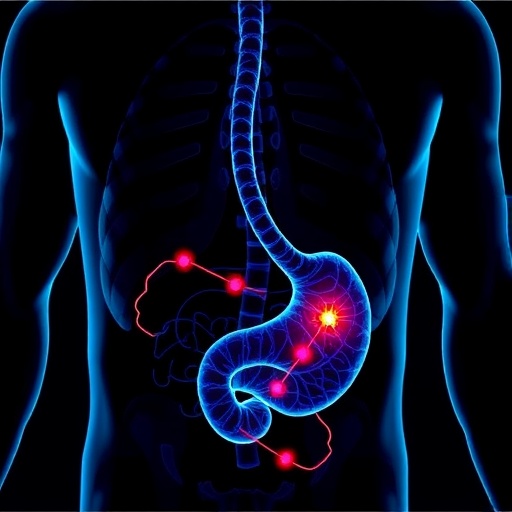In the relentless pursuit of advancing medical diagnostics, biosensor technology has emerged as a beacon of hope, particularly in the early detection and diagnosis of gastrointestinal (GI) tumors. Gastrointestinal malignancies remain a formidable global health challenge, accounting for significant morbidity and mortality worldwide. The ability to swiftly and accurately identify these tumors can dramatically alter patient outcomes, underscoring the critical role biosensors are beginning to play in this domain. By harmonizing biological recognition elements with sophisticated transducers, these devices promise heightened sensitivity, specificity, and a rapid turnaround time, reshaping how clinicians approach GI cancer screening.
Biosensors function by coupling bio-recognition components—such as enzymes, antibodies, nucleic acids, or cellular structures—with physical or chemical transducers that convert biological responses into measurable signals. This integration fosters a platform capable of detecting a wide array of tumor biomarkers at unprecedented sensitivity levels. Recent innovations have pushed detection thresholds into the realm of attomoles and even zeptomoles, heralding a new era where trace biomolecules indicative of malignancy can be identified well before conventional imaging or biopsy might reveal abnormalities.
Colorectal cancer, a predominant type of GI tumor, has been at the forefront of biosensor application research. Cutting-edge biosensing approaches have demonstrated remarkable efficacy in detecting nucleic acids like microRNAs (miRNAs), proteins that serve as tumor markers, cellular entities, and extracellular vesicles such as exosomes. Particularly noteworthy is the refinement of miRNA detection techniques, which have reached amole-level sensitivity, enabling clinicians to recognize cancerous processes at their molecular genesis. Simultaneously, advancements in protein detection methodologies—employing enhanced immunosensors and signal amplification strategies—continue to evolve, promising improved reliability and specificity.
Parallel to nucleic acid sensing, the investigation into exosome detection represents an exciting frontier. Exosomes—nano-sized extracellular vesicles secreted by tumor cells—carry a wealth of molecular information reflective of the tumor microenvironment and genetic alterations. Progressive biosensor designs capable of isolating and characterizing these vesicles are gaining momentum, offering a less invasive means to discern tumor presence and monitor treatment responses. The evolution of exosome biosensing technology holds the potential to revolutionize liquid biopsy paradigms, transforming cancer diagnostics into minimally invasive, real-time processes.
Esophageal cancer detection benefits from tailored biosensors that leverage the unique enzymatic cascades and immune sensor profiles characteristic of this malignancy. By integrating enzyme-specific biosensing elements with immunological recognition units, researchers have crafted platforms that specifically discriminate esophageal tumor signatures from benign conditions. These biosensors yield enhanced diagnostic accuracy, facilitating early-stage identification which is pivotal in improving survival rates for this aggressive cancer type.
Similarly, the field of gastric cancer diagnostics has witnessed significant strides through the development of biosensors targeting similar biomolecules—miRNAs, specific proteins, and exosomes—associated with the disease. Innovations include multiplexed sensing techniques capable of simultaneously interrogating multiple biomarkers, thereby increasing diagnostic confidence and addressing tumor heterogeneity. This capability is fundamental, as the gastric tumor microenvironment exhibits substantial complexity, and single-marker detection often lacks the robustness required for clinical translation.
The future trajectory of biosensor technology in GI tumor detection is oriented towards enhancing performance through multifaceted approaches. Combining diverse biomarkers for joint detection is rapidly becoming a strategic focus, as multimodal biosensors provide comprehensive molecular fingerprints of tumors. Such integrative platforms reduce false positives and negatives, streamline diagnostic workflows, and facilitate personalized treatment planning. The scene is set for these multi-target biosensors to spearhead precision oncology initiatives.
Beyond biomarker multiplexing, miniaturization and system integration promise to propel biosensor applicability. Lab-on-a-chip (LOC) devices incorporating biosensing elements are being refined for portability and ease of use, potentially enabling point-of-care testing and real-time monitoring. This shift not only democratizes access to advanced diagnostics but also accelerates clinical decision-making, critical in resource-limited settings or emergency scenarios.
Moreover, advances in materials science, nanotechnology, and microfabrication are synergistically enhancing biosensor capabilities. Graphene and other two-dimensional materials, quantum dots, and nanowires, among others, are being harnessed to amplify signal transduction, reduce background noise, and facilitate label-free detection. These innovations contribute to improved sensitivity and selectivity, underscoring the dynamic interplay between biosensing and nanotechnology.
In addition to technical advancements, the integration of biosensors with digital health tools such as artificial intelligence and machine learning algorithms is poised to elevate diagnostic accuracy further. AI-enabled pattern recognition can interpret complex biosensor outputs, identify subtle biomarker correlations, and predict tumor progression trends, thereby transforming raw biosensor data into actionable clinical insights.
The clinical deployment of biosensor technologies encounters challenges, including reproducibility, standardization, regulatory approval, and cost-effectiveness. Addressing these issues requires collaborative efforts across multidisciplinary domains, ensuring that biosensors transition effectively from laboratory prototypes to routine clinical instruments. Nevertheless, ongoing research and pilot studies reflect promising progress, heralding a future where biosensor-enabled diagnostics are integral to GI oncology.
Ultimately, the convergence of biosensor innovation, molecular biology, and technological integration promises to redefine GI tumor detection and management. By facilitating early diagnosis, dynamic monitoring, and personalized therapeutic strategies, biosensors are positioned to contribute significantly to reducing the global burden of gastrointestinal malignancies. Continued investment and research in this vibrant field are imperative, as they hold the keys to unlocking transformative advances in cancer care.
Subject of Research: Biosensor applications and development trends in the detection and diagnosis of gastrointestinal tumors
Article Title: Applications and development trend of biosensors in the detection and diagnosis of gastrointestinal tumors
Article References:
Zhang, C., Jin, L. & Wang, F. Applications and development trend of biosensors in the detection and diagnosis of gastrointestinal tumors.
BioMed Eng OnLine 24, 68 (2025). https://doi.org/10.1186/s12938-025-01371-y
Image Credits: AI Generated




